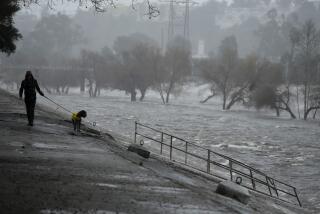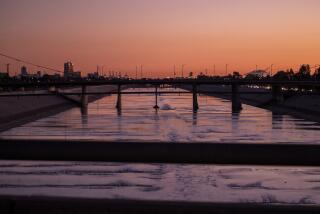Letters: A healthy L.A. River, a healthier L.A.

Re “L.A. River at a watershed,” July 24
There is a critical benefit missing from the discussion on restoring the Los Angeles River: public health.
With obesity in Los Angeles nearing 40% in low-income areas — often the same areas that lack adequate park access — Angelenos are in urgent need of healthful and attractive places to walk, run, bicycle and play. Even mild physical activity such as walking 30 minutes a day can protect against chronic diseases, and several studies have concluded that actively commuting through walking or bicycling can meet physical activity requirements. Further health benefits from restoring the river may be realized through improved air and water quality, especially as fewer people commute by car.
The cost of the restoration options under consideration range from $444 million to $1 billion, the latter of which is roughly equivalent to two days of healthcare spending in California and less than the ongoing 405 Freeway widening project. By some estimates, every $1 investment in trails for physical activity results in about $3 in direct medical benefits.
We must not ignore the public health potential of a comprehensive L.A. River parkway.
Richard Jackson, MD
Tyler Watson
Los Angeles
Jackson is the chairman of the environmental health sciences program at UCLA’s Fielding School of Public Health, where Watson is a researcher.
Amnesia seems to have affected us. As reported in The Times on Feb. 12, 1992, “City emergency workers in helicopters and rubber boats rescued 48 people stranded in cars and other vehicles as floodwaters rose rapidly on Burbank Boulevard and other streets that run around and through the basin.”
The concrete Los Angeles River was built to protect the city from massive flooding. The Sepulveda Dam, finished in 1941, protected downstream neighborhoods (and allowed others to be built); the postwar concretization of the upstream riverbed allowed the development of the San Fernando Valley. All of the homes and businesses from Canoga Park going downstream could be seriously impacted if those concrete walls were removed.
Kayaking down the L.A. River is not a necessity; protection from flooding is.
Don Evans
Canoga Park
Born and raised in Southern California, how many times have I heard the urban myth repeated that the L.A. basin was a desert wasteland before William Mulholland and others like him brought water to the region?
Before massive human settlement, what is now downtown L.A. was defined by its rivers, lakes, swamps and, yes, forests. Originally, the L.A. River had no outlet to the sea; instead, it pooled in cienegas.
Read the early accounts of the Spaniards to realize how rapidly we changed this region with misguided land management practices that included overgrazing, mono-cropping and wasteful irrigation.
It’s time to reinvest in the L.A. River.
Pamela Nagler
Claremont
ALSO:
Letters: Why Caroline Kennedy?
Letters: Racism isn’t funny, officers
Letters: A better Rx for California’s malpractice cap
More to Read
A cure for the common opinion
Get thought-provoking perspectives with our weekly newsletter.
You may occasionally receive promotional content from the Los Angeles Times.






